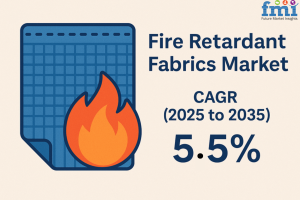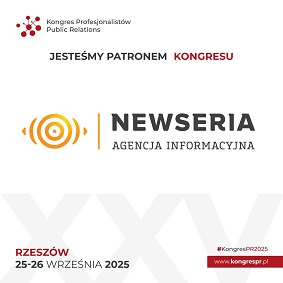Fire Retardant Fabrics Market to Reach USD 7,120 Million by 2035, Driven by Safety Demands and Tech Advancements
The UK's fire-retardant textiles market is growing steadily at a 6.0% CAGR from 2025 to 2035, driven mainly by rising use in the oil and gas sector.
Fire retardant fabrics are engineered using chemical treatments or inherently flame-resistant fibers to provide an additional layer of protection in hazardous environments. These fabrics are crucial in mitigating fire-related risks in occupational settings, offering both safety and compliance with regulatory norms.
Request Your Sample Report Now! https://www.futuremarketinsights.com/reports/sample/rep-gb-9602
Market Dynamics
The primary driver of the fire retardant fabrics market is the global emphasis on workplace safety, particularly in industries that deal with flammable substances and high-temperature environments. Governments and safety organizations worldwide are imposing stricter regulations to ensure worker protection, especially in oil refineries, chemical plants, mining operations, and military applications.
Moreover, advancements in textile technology have led to the development of fabrics that offer fire resistance without compromising comfort or breathability. This is especially critical in sectors where workers must wear protective gear for extended periods. Innovative blends of aramid, modacrylic, and PBI fibers are being adopted to produce garments that meet both safety and performance requirements.
In recent years, the construction sector has also emerged as a key contributor to market growth. With an uptick in infrastructure projects and smart city developments, there is a growing emphasis on fire-resistant materials for curtains, upholstery, and structural insulation. Similarly, the transportation industry, including automotive, railways, and aviation, has increased the use of fire retardant textiles in seating, carpeting, and wall coverings to enhance passenger safety.
Regional Outlook
Geographically, North America holds a significant share in the fire retardant fabrics market, primarily due to robust safety standards, high awareness levels, and a well-established industrial base. The United States, in particular, has enforced stringent Occupational Safety and Health Administration (OSHA) regulations that mandate the use of flame-resistant clothing in certain industries.
Europe follows closely, with countries such as Germany, France, and the United Kingdom investing in advanced protective wear for both military and civilian use. The European Union’s focus on worker health and safety, along with fire safety codes in construction, contributes to the regional market’s strength.
The Asia-Pacific region is expected to witness the fastest growth during the forecast period. Rapid industrialization, urbanization, and an expanding manufacturing sector are driving the demand for fire retardant fabrics in countries like China, India, and South Korea. Government initiatives aimed at improving workplace safety standards are also fueling adoption across various industries.
Stay Ahead with Detailed Analysis – Get the Full Report! https://www.futuremarketinsights.com/reports/fire-retardant-fabrics-market
Competitive Landscape
The fire retardant fabrics market is marked by ongoing innovation and competitive activity. Key industry players are focusing on research and development to enhance fabric performance while reducing environmental impact. The development of eco-friendly fire retardant treatments and the use of bio-based fibers are gaining traction as sustainability becomes a priority.
Fire Retardant Fabrics Market Leading Players
• DuPont
• Royal TenCate N.V.
• PBI Performance Products
• Milliken & Company
• Teijin Limited
• Solvay S.A.
• Huntsman Corporation
• Trevira GmbH
• Toyobo Co., Ltd.
• Kaneka Corporation
Textiles, Fabrics, Yarn & Fibres Industry Analysis: https://www.futuremarketinsights.com/industry-analysis/textiles-fabrics-yarn-and-fibres
Key segmentation of Fire Retardant Fabrics Market
By Base Material Type:
• Cotton
• Nylon
• Aramid
• Polyesters
• Others
By Application:
• Protective Wear
• Upholstery
• Tents and Coverings
• Curtains and Drapes
• Others
By Processing Method:
• Woven
• Non-woven
• Knitted
• Others
By Region:
• North America
• Latin America
• Western Europe
• Eastern Europe
• Asia Pacific Excluding Japan
• Japan
• Middle East and Africa
Have a Look at Related Research Reports of Chemicals & Materials
Anti-Static Fibres Market Outlook: https://www.futuremarketinsights.com/reports/anti-static-fibres-market
Polymer Coated Fabrics Market Trends: https://www.futuremarketinsights.com/reports/polymer-coated-fabrics-market
Polyimide Fibers Market Demand: https://www.futuremarketinsights.com/reports/polyimide-fibers-market
Poly Cotton Fabric Market Growth: https://www.futuremarketinsights.com/reports/poly-cotton-fabric-market
Aramid Fiber Market Forecast: https://www.futuremarketinsights.com/reports/aramid-fiber-market
About Future Market Insights (FMI)
Future Market Insights, Inc. (ESOMAR certified, recipient of the Stevie Award, and a member of the Greater New York Chamber of Commerce) offers profound insights into the driving factors that are boosting demand in the market. FMI stands as the leading global provider of market intelligence, advisory services, consulting, and events for the Packaging, Food and Beverage, Consumer Technology, Healthcare, Industrial, and Chemicals markets. With a vast team of over 400 analysts worldwide, FMI provides global, regional, and local expertise on diverse domains and industry trends across more than 110 countries. Join us as we commemorate 10 years of delivering trusted market insights. Reflecting on a decade of achievements, we continue to lead with integrity, innovation, and expertise.
Contact Us:
Future Market Insights Inc.
Christiana Corporate, 200 Continental Drive,
Suite 401, Newark, Delaware - 19713, USA
T: +1-347-918-3531
For Sales Enquiries: sales@futuremarketinsights.com
Website: https://www.futuremarketinsights.com
Ankush Nikam
Future Market Insights, Inc.
+91 90966 84197
email us here
Visit us on social media:
LinkedIn
Facebook
YouTube
X
Legal Disclaimer:
EIN Presswire provides this news content "as is" without warranty of any kind. We do not accept any responsibility or liability for the accuracy, content, images, videos, licenses, completeness, legality, or reliability of the information contained in this article. If you have any complaints or copyright issues related to this article, kindly contact the author above.
Steel Processing Market to Reach New Heights by 2031, Growing at a CAGR of 3.1%
New Law Enforcement Training Targets Senior Leaders for Workplace Fatalities and Serious Injuries
CONTROLTEK to Unveil New Innovations at NRF PROTECT
Kalendarium
Więcej ważnych informacji
 Jedynka Newserii
Jedynka Newserii

 Jedynka Newserii
Jedynka Newserii

Transport

Polska przeciwna przedłużeniu umowy UE–Ukraina o transporcie drogowym. Uderza ona w krajową branżę transportową
Parlament Europejski większością głosów poparł przedłużenie umowy o transporcie drogowym między Unią Europejską a Ukrainą do końca 2025 roku. Zdaniem polskich europosłów, którzy głosowali przeciw, podtrzymanie liberalizacji przewozów drogowych przyczyni się do dalszego obniżenia konkurencyjności polskich firm transportowych. W przeciwieństwie do ukraińskich przewoźników muszą one spełniać szereg unijnych wymogów. Polska delegacja planuje przedstawić swoje stanowisko europejskiemu komisarzowi ds. zrównoważonego transportu i turystyki.
Transport
M.Kobosko: Wszyscy zapłacimy za eskalację między Izraelem a Iranem. Kraje UE powinny robić więcej dla budowy swojego własnego bezpieczeństwa

– Mrzonki o armii europejskiej są mrzonkami, to trzeba sobie jasno powiedzieć. Każdy z krajów członkowskich Unii Europejskiej musi, i to się na szczęście już dzieje, nie tylko myśleć i mówić, ale też robić coraz więcej dla budowy swojego własnego bezpieczeństwa w koordynacji wspólnej – uważa Michał Kobosko, poseł do Parlamentu Europejskiego z Polska 2050. W kontekście światowych konfliktów, w tym na linii Izrael–Iran, jego zdaniem Polska powinna się skupić na współpracy zarówno ze Wspólnotą, jak i Stanami Zjednoczonymi.
Muzyka
Trwający Festiwal Mozartowski przyciąga tłumy melomanów. To jedno z najważniejszych wydarzeń w stolicy

Artystka zaznacza, że za sprawą Warszawskiej Opery Kameralnej jeszcze przez dwa tygodnie Warszawa będzie rozbrzmiewać Mozartem. Kolejna edycja festiwalu poświęconego temu wybitnemu kompozytorowi zajmuje ważne miejsce w kulturalnym kalendarzu stolicy i przyciąga tłumy melomanów. A przed nimi jeszcze sporo atrakcji. Alicja Węgorzewska szczególnie zaprasza na dwie premiery, jedną skierowaną do młodych odbiorców, drugą – dedykowaną koneserom. Niezwykle ciekawie zapowiada się także nowy sezon artystyczny w WOK-u. Twórcy już pracują nad kolejnymi spektaklami i nagrywają nowe płyty.
Partner serwisu
Szkolenia

Akademia Newserii
Akademia Newserii to projekt, w ramach którego najlepsi polscy dziennikarze biznesowi, giełdowi oraz lifestylowi, a także szkoleniowcy z wieloletnim doświadczeniem dzielą się swoją wiedzą nt. pracy z mediami.









.gif)

 |
| |
| |
|